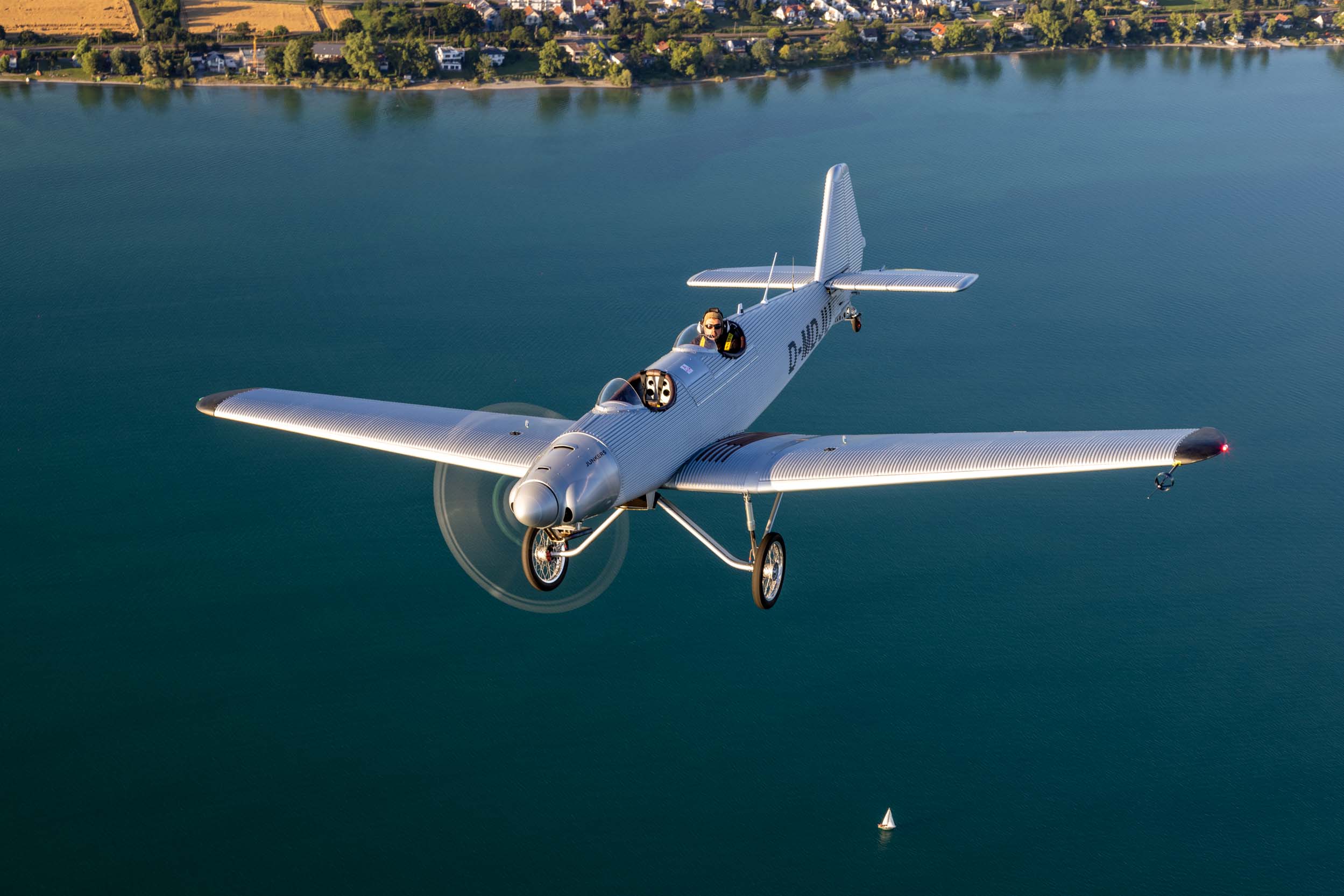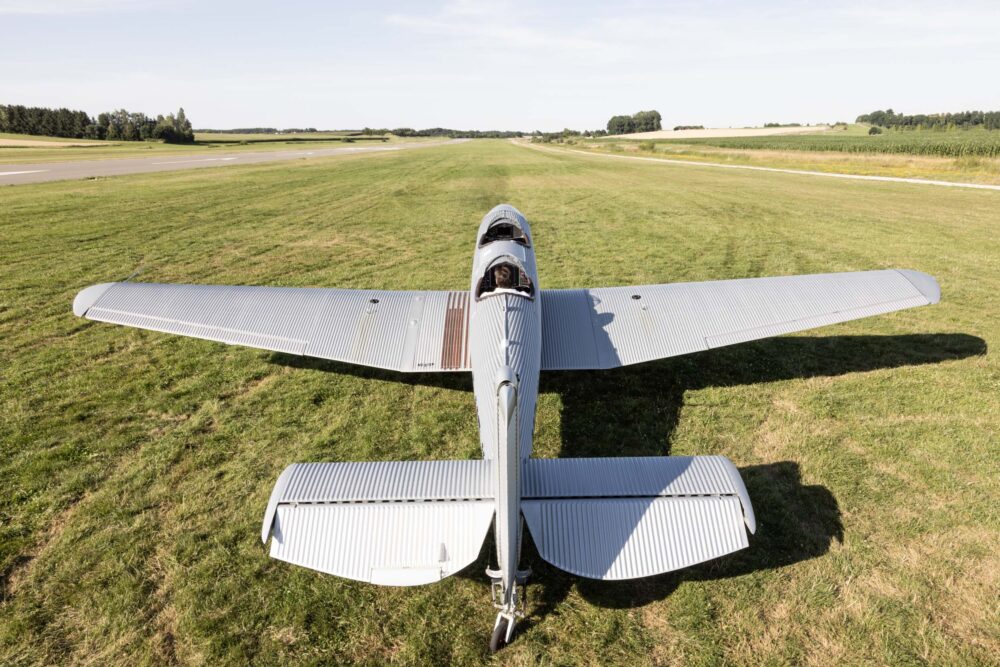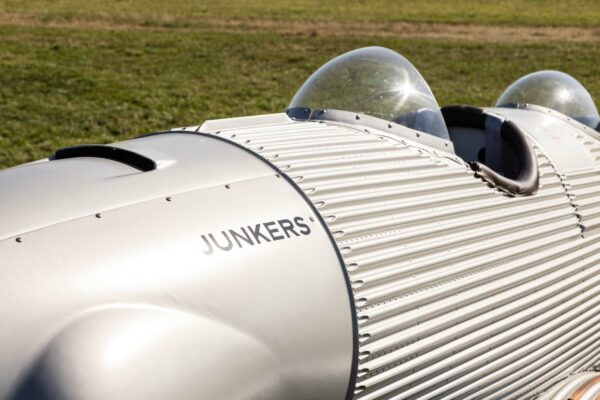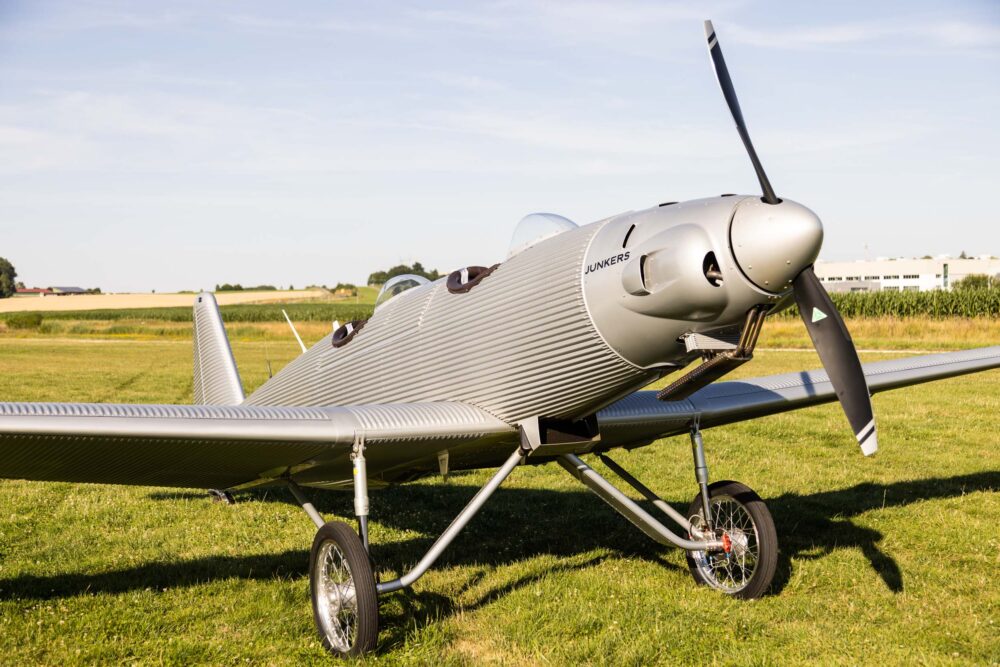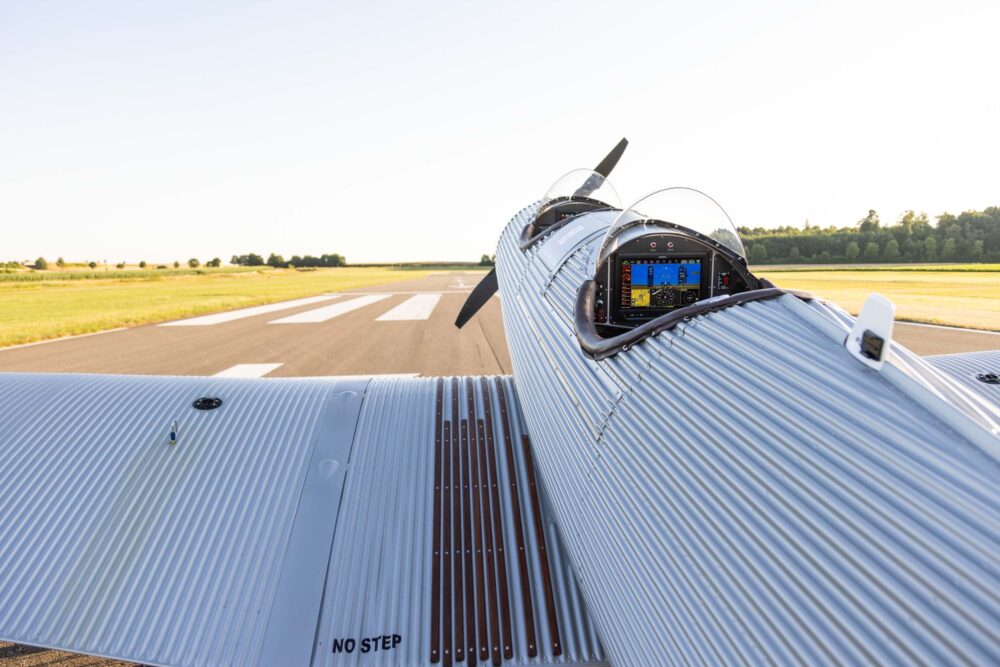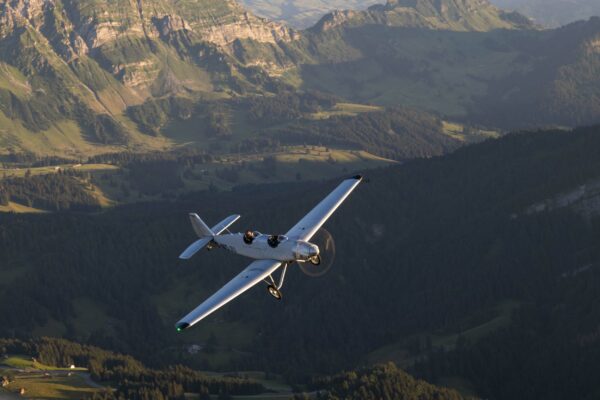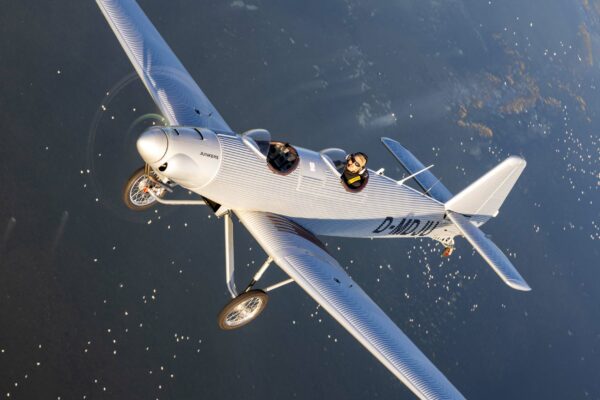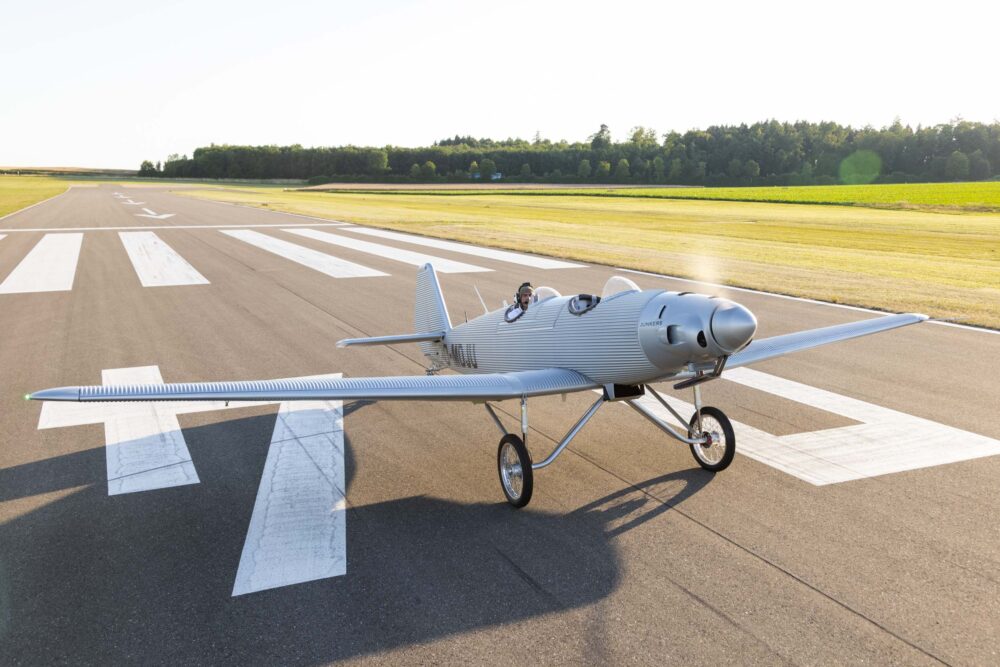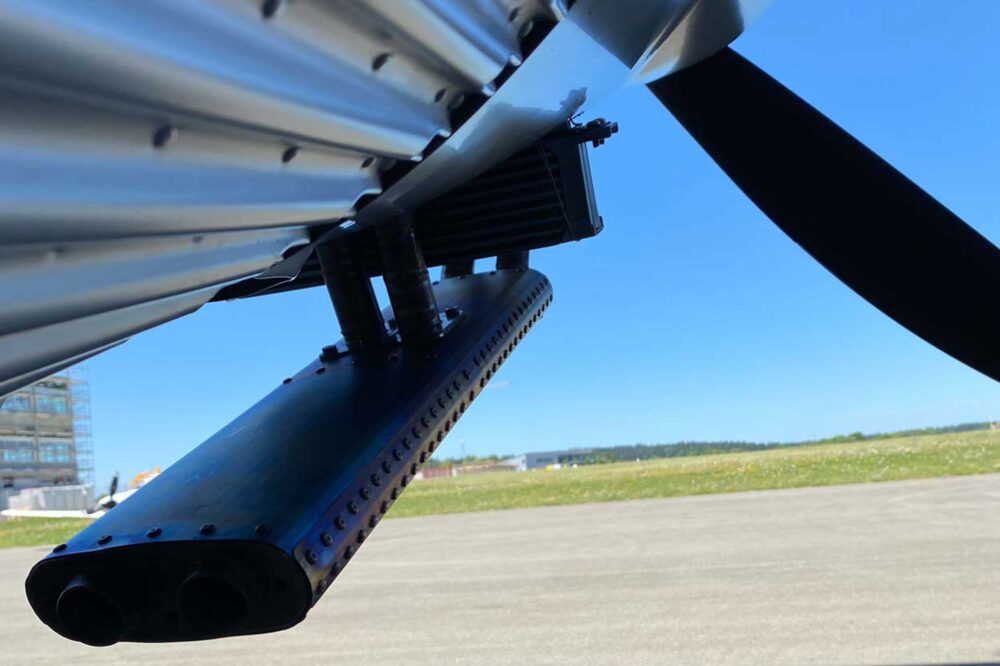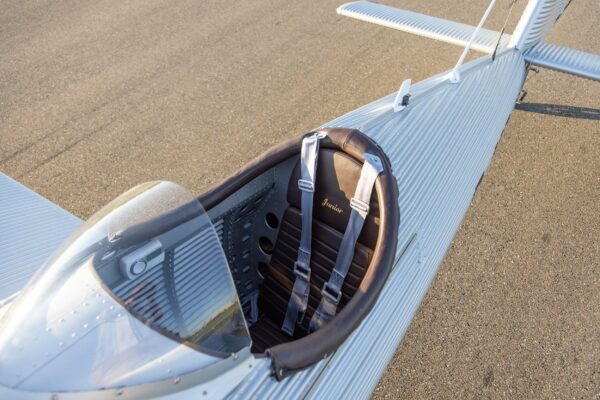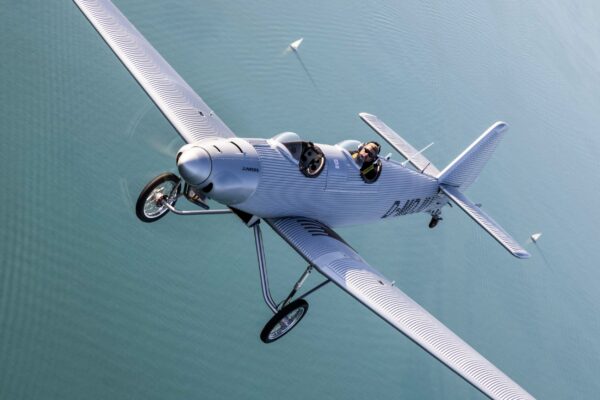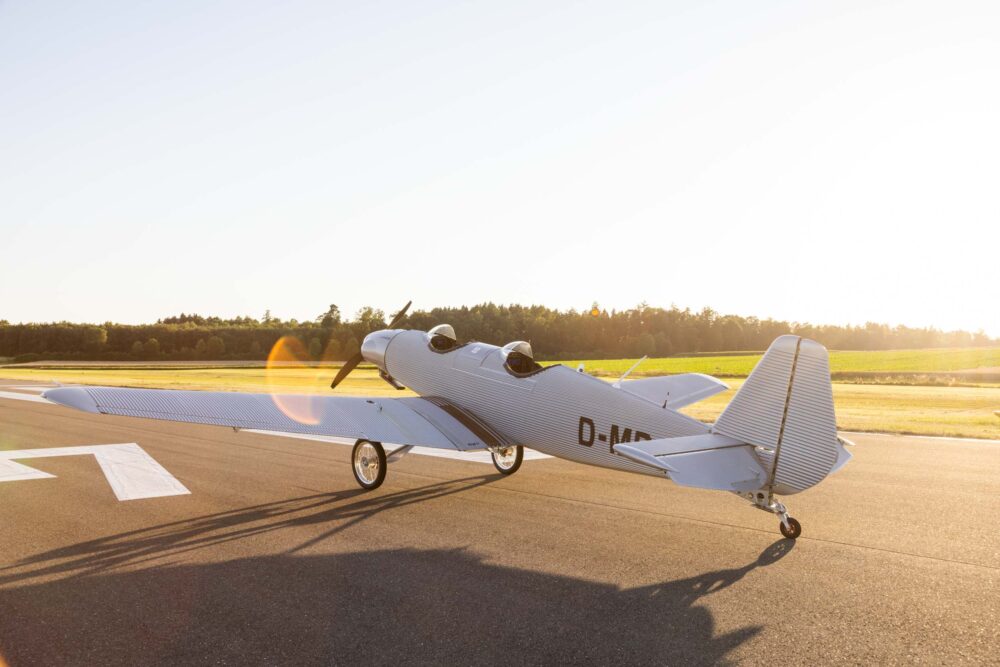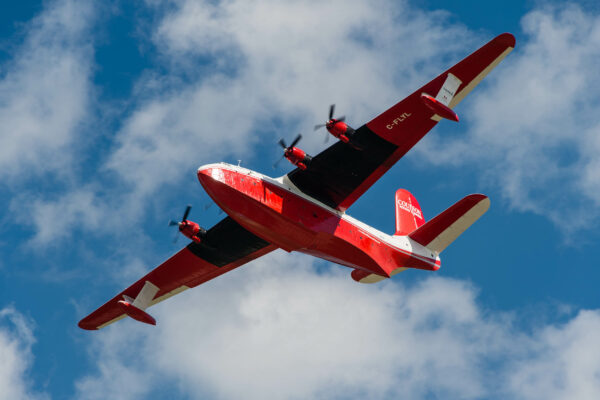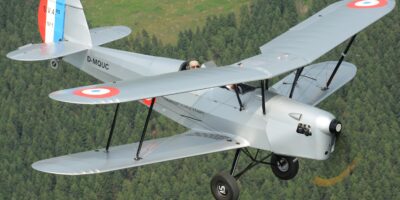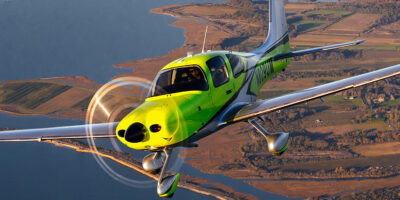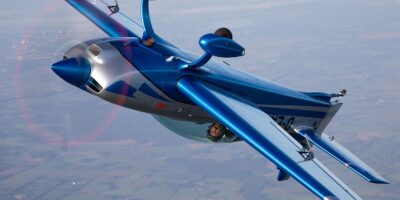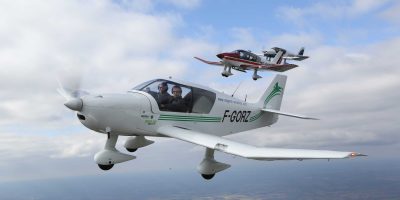We don’t climb high – who would want to do that in an aircraft like this? The feeling up here is overwhelming. The undulating countryside to the left and right takes me far back in time. Despite the thermals over the Danube valley north of the airfield, which is still narrow here, the aircraft lies calmly in the air, not a bit fidgety.
Flying straight and level at a constant altitude, I push the throttle forward until I have cruise power. At 4,800rpm we are at 150km/h, at 5,000 we reach 160. You probably don’t want to go much faster in an open aeroplane anyway.
The control forces are very balanced, even in the full circles I am now trying. Deflections on the stick around the lateral axis calm down again immediately. Add a little power, raise the nose a little, then we hold altitude.
The Flight Path Indicator and the horizon line on the Primary Flight Display – again a contrast of times – help.
Another time shift is the red handle located in the front right of both cockpits. It triggers the Galaxy ballistic rescue parachute system, which is installed between the two cockpit openings in the fuselage.
There was a baggage compartment in the original, now it is found, albeit very small, behind the pilot’s seat back.


